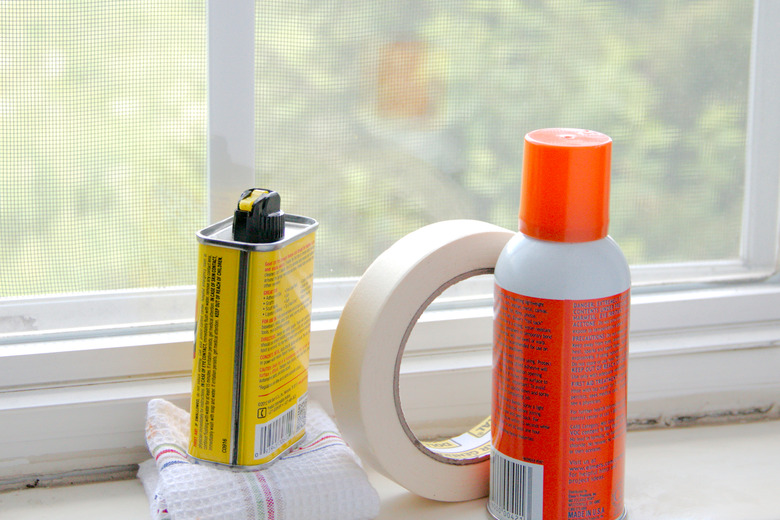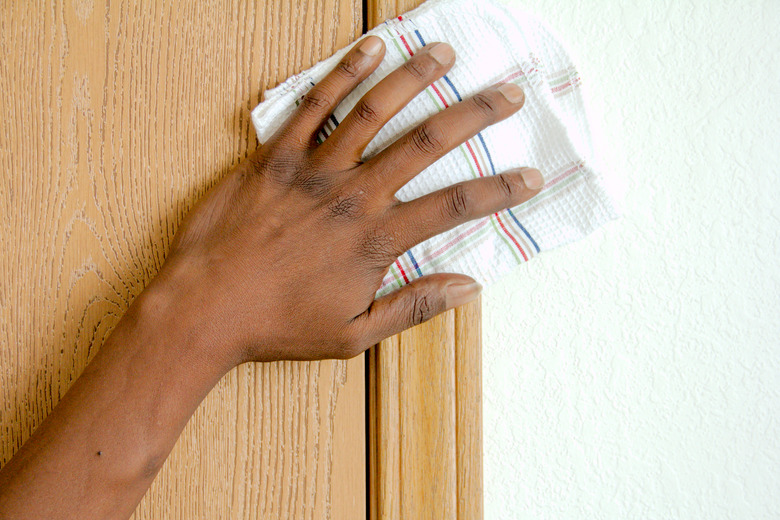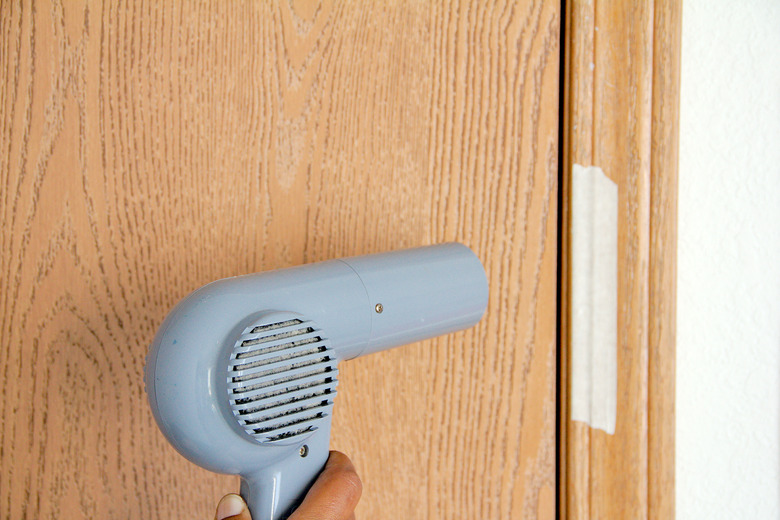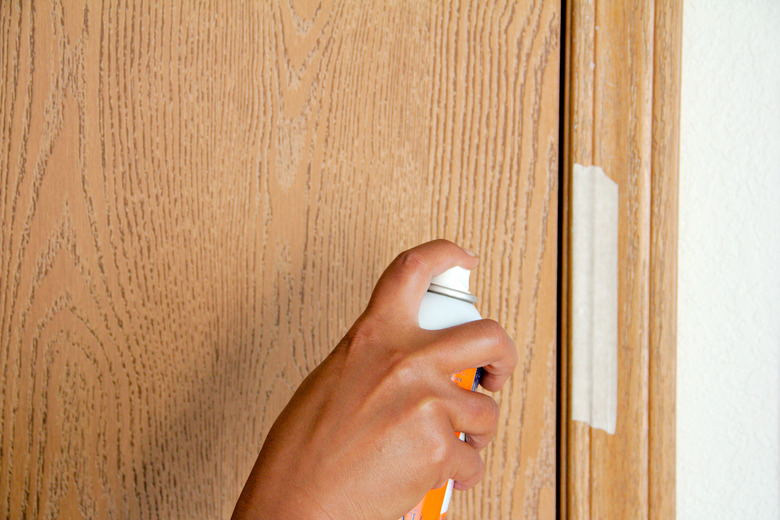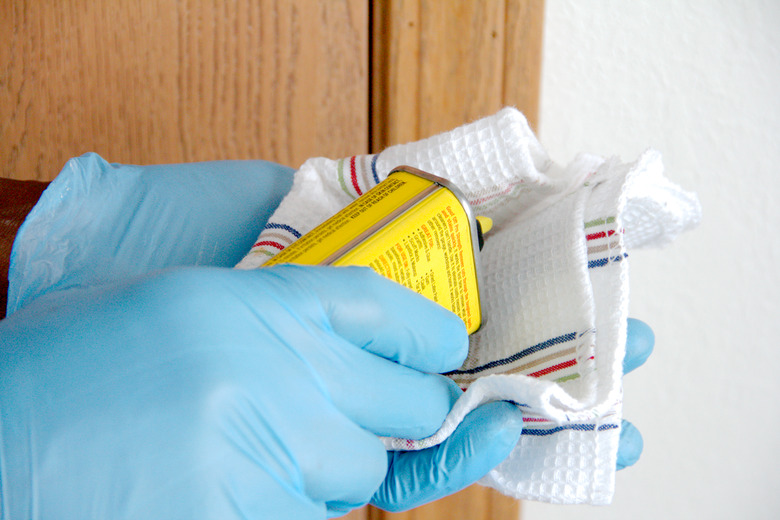How To Remove Dried Out Masking Tape
Things Needed
-
Warm water
-
Clean rag
-
Hair dryer
-
Razor blade
-
Wood cleaning soap
-
Spray-on lubricant
-
Commercial hand-cleaning cream
-
Mineral spirits
-
Lacquer thinner
Tip
Single-sided razor blades are available at home centers and hardware stores. Even safer are plastic razor blades that are easy to handle and less likely to cut your fingers.
Warning
Work in a well-ventilated area when applying aromatic chemical solvents such as mineral spirits or lacquer thinner.
Once masking tape has dried out, the hardened adhesive can prove quite difficult to remove. Old, neglected masking tape often seems cemented to window glass, metal trim, or other household surfaces. While it can be scraped off or sanded off, that can inadvertently damage the surface the tape was originally meant to protect. Fortunately, there are a variety of techniques for safely removing dried out masking tape, and they all work to varying degrees — if one approach doesn't do the trick, simply try another.
Step 1
Start with the gentlest approach — warm water and a damp cloth. Wet the cloth and rub it over the dried-out tape. Allow the water to soak in for a few minutes, then carefully peel back the tape. Re-moisturizing the surface should help soften the glue and loosen the paper tape. You may need to use a razor blade to remove any sticky residue
Step 2
Turn on your hair dryer and play a stream of hot air on the old tape from about 4 inches away. The warm air should soften the glue within a couple of minutes and make it possible for you to carefully peel the tape off. Monitor this process closely to prevent the heat from damaging the surface under and around the masking tape.
Step 3
Use commercial products like wood cleaning soaps, spray-on lubricants, and commercial hand cleaning cream to moisten and reactivate the glue on the tape and make it easier to peel the tape away. Here again, you may need to use a razor blade to remove any small pieces of paper and glue left behind.
Step 4
Applying chemical solvents such as mineral spirits or lacquer thinner may help soften the glue, and you should be able to just wipe up the mess left behind. Take special precautions when working with these strong chemicals because they can also damage the surface surrounding the tape. If you decide to try these solvents, start with mineral spirits because it is milder and less likely to damage the underlying substrate.
